CT
-
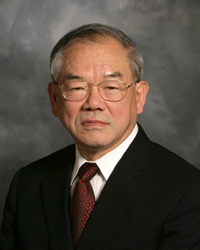 President Suh to Receive Honorary Doctorate from Carnegie Mellon University
Carnegie Mellon University of the United States has decided to present an honorary doctorate degree to KAIST President Nam-Pyo Suh, school authorities said on April 30.
President Suh will receive the honorary degree during the university"s 111th commencement ceremony at its Pittsburgh campus on May 18. Suh earned his Ph.D. in mechanical engineering at Carnegie Mellon in 1964.
Carnegie Mellon University said in a press release that Suh is honored for transforming KAIST into a world-class institution since he became president of KAIST in 2006.
"His distinguished academic career has also included posts at the University of South Carolina and the Massachusetts Institute of Technology, as well as an assistant directorship for the National Science Foundation of the United States. Beyond his academic leadership, Suh invented an industrial process for production of plastic parts that is used in factories worldwide. He holds more than 50 patents and helped start several companies," the press release said.
Five other prominent Americans will also receive honorary doctorate degrees from Carnegie Mellon along with President Suh. They are Al Gore, former U.S. vice president; Norman R. Augustine, former president and CEO of Martin-Marietta and Lockheed Martin and chairman of the American Red Cross; Jeff Bezos, founder of Amazon.com, the world"s largest online retailer; Elizabeth Catlett, an artist and sculptor famed for her dedication to the rights of minorities and women; and Patrick Colonel Suppes, a professor emeritus at Stanford University.
Carnegie Mellon, a leading research university of the United States is known for its distinctive mix of programs in engineering, computer science, robotics, business, public policy, fine arts and the humanities.
2008.04.30 View 15457
President Suh to Receive Honorary Doctorate from Carnegie Mellon University
Carnegie Mellon University of the United States has decided to present an honorary doctorate degree to KAIST President Nam-Pyo Suh, school authorities said on April 30.
President Suh will receive the honorary degree during the university"s 111th commencement ceremony at its Pittsburgh campus on May 18. Suh earned his Ph.D. in mechanical engineering at Carnegie Mellon in 1964.
Carnegie Mellon University said in a press release that Suh is honored for transforming KAIST into a world-class institution since he became president of KAIST in 2006.
"His distinguished academic career has also included posts at the University of South Carolina and the Massachusetts Institute of Technology, as well as an assistant directorship for the National Science Foundation of the United States. Beyond his academic leadership, Suh invented an industrial process for production of plastic parts that is used in factories worldwide. He holds more than 50 patents and helped start several companies," the press release said.
Five other prominent Americans will also receive honorary doctorate degrees from Carnegie Mellon along with President Suh. They are Al Gore, former U.S. vice president; Norman R. Augustine, former president and CEO of Martin-Marietta and Lockheed Martin and chairman of the American Red Cross; Jeff Bezos, founder of Amazon.com, the world"s largest online retailer; Elizabeth Catlett, an artist and sculptor famed for her dedication to the rights of minorities and women; and Patrick Colonel Suppes, a professor emeritus at Stanford University.
Carnegie Mellon, a leading research university of the United States is known for its distinctive mix of programs in engineering, computer science, robotics, business, public policy, fine arts and the humanities.
2008.04.30 View 15457 -
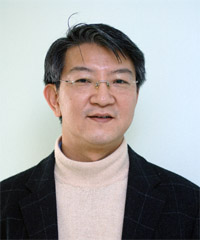 Prof. Sang-Yup Lee Co-Editor-in-Chief of Biotechnology Journal
Prof. Sang-Yup Lee of KAIST"s Department of Chemical and Biomolecular Engineering has been appointed as co-editor-in-chief of Biotechnology Journal published by Wiley-VCH, a German-based leading technical publisher, university authorities said Tuesday, April 15.
Launched in January 2006, Biotechnology Journal has covered biological process, brain ailments, biological medicine, protein design and other applied bio-sciences.
Starting in May, Lee will be responsible for setting and overseeing editorial direction of the journal along with Prof. Alois Jungbauer of Austria.
Professor Lee has been gaining recognition in and outside the country for his research on metabolic engineering. In 2002, he was chosen as one of Asia"s next generation leaders by the World Economic Forum. In 2007, Lee was elected a fellow of the American Association for the Advancement of Science, the world"s largest general scientific society. He is also serving as an editorial member of more than ten international journals including Biotechnology & Bioengineering.
Awards and honors include the First Young Scientist"s Award from the President of Korea, the Scientist of the Month Award from the Korean Ministry of Science and Technology, the Best Patent Award from Korean Intellectual Property Office, the Citation Classic Award from ISI, USA, and the First Elmer Gaden Award (1999 Best Paper Award) from Biotechnology and Bioengineering (John Wiley & Sons, USA) at the ACS National meeting.
2008.04.16 View 16538
Prof. Sang-Yup Lee Co-Editor-in-Chief of Biotechnology Journal
Prof. Sang-Yup Lee of KAIST"s Department of Chemical and Biomolecular Engineering has been appointed as co-editor-in-chief of Biotechnology Journal published by Wiley-VCH, a German-based leading technical publisher, university authorities said Tuesday, April 15.
Launched in January 2006, Biotechnology Journal has covered biological process, brain ailments, biological medicine, protein design and other applied bio-sciences.
Starting in May, Lee will be responsible for setting and overseeing editorial direction of the journal along with Prof. Alois Jungbauer of Austria.
Professor Lee has been gaining recognition in and outside the country for his research on metabolic engineering. In 2002, he was chosen as one of Asia"s next generation leaders by the World Economic Forum. In 2007, Lee was elected a fellow of the American Association for the Advancement of Science, the world"s largest general scientific society. He is also serving as an editorial member of more than ten international journals including Biotechnology & Bioengineering.
Awards and honors include the First Young Scientist"s Award from the President of Korea, the Scientist of the Month Award from the Korean Ministry of Science and Technology, the Best Patent Award from Korean Intellectual Property Office, the Citation Classic Award from ISI, USA, and the First Elmer Gaden Award (1999 Best Paper Award) from Biotechnology and Bioengineering (John Wiley & Sons, USA) at the ACS National meeting.
2008.04.16 View 16538 -
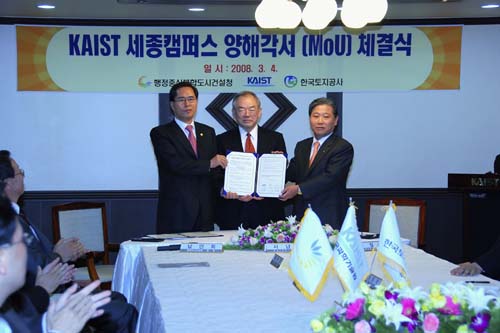 KAIST to Build Branch Campus in New Administrative City
KAIST signed a memorandum of understanding (MOU) with the Multifunctional Administrative City Construction Agency and the Korea Land Corporation on March 4 to build a branch campus in the city now under construction to house many government organizations to be relocated from Seoul.
The MOU calls for building a well-facilitated KAIST campus on 310,000 square meters of land within the planned city, about 30 kilometers west of Daejeon. The multifunctional city, named Sejong City, is scheduled to be dedicated in 2014.
The MAC now being built in the Yongi-Gongju area of South Chungcheong Province is geographically in the center of South Korea, and many governmental agencies and major public organizations will move in from 2015.
The KAIST campus is envisioned to be home to a newly established College of Strategy and Policy, a Strategy and Policy Research Center, and an Innovative Technology Research Center. The College of Medical Science currently based in the Daejeon campus will be relocated to the campus. With a research-oriented hospital and a medical engineering research center, KAIST hopes to become a leading institution in disease treatment and medical engineering technologies.
The new campus is also expected to house new KAIST colleges now in the planning stage which will offer interdisciplinary courses such as the College of IT and Contents and the College of Life Sciences. KAIST also seeks to resolve housing shortage problems by building an in-campus village designed to provide international living environment for professors and students on the planned campus
2008.03.18 View 17933
KAIST to Build Branch Campus in New Administrative City
KAIST signed a memorandum of understanding (MOU) with the Multifunctional Administrative City Construction Agency and the Korea Land Corporation on March 4 to build a branch campus in the city now under construction to house many government organizations to be relocated from Seoul.
The MOU calls for building a well-facilitated KAIST campus on 310,000 square meters of land within the planned city, about 30 kilometers west of Daejeon. The multifunctional city, named Sejong City, is scheduled to be dedicated in 2014.
The MAC now being built in the Yongi-Gongju area of South Chungcheong Province is geographically in the center of South Korea, and many governmental agencies and major public organizations will move in from 2015.
The KAIST campus is envisioned to be home to a newly established College of Strategy and Policy, a Strategy and Policy Research Center, and an Innovative Technology Research Center. The College of Medical Science currently based in the Daejeon campus will be relocated to the campus. With a research-oriented hospital and a medical engineering research center, KAIST hopes to become a leading institution in disease treatment and medical engineering technologies.
The new campus is also expected to house new KAIST colleges now in the planning stage which will offer interdisciplinary courses such as the College of IT and Contents and the College of Life Sciences. KAIST also seeks to resolve housing shortage problems by building an in-campus village designed to provide international living environment for professors and students on the planned campus
2008.03.18 View 17933 -
 Women Leaders Awarded Honorary Degrees
Korea"s two women leaders, Park Geun-hye, former President of the Grand National Party, and Lee Gil-ya, chairperson of the Gachon Gil Foundation, a major medical services organization, were awarded honorary doctorate degrees by KAIST, Korea"s state-run science and technology research university, on Feb. 29.
It is the first time in the school"s 37-year history that women have been awarded honorary doctorate degrees. Park and Lee were conferred with the honor during the university"s 2008 graduation ceremony in recognition of their achievements in social services.
KAIST President Suh Nam-pyo said that the university decided to confer honorary doctorate degrees to Park and Lee, who both have educational backgrounds in the fields of engineering and science, in order to present role models to female students in science and engineering who still make up a relatively small percentage of the total enrollment at KAIST and throughout Korean universities.
"Our graduates and future students will strive to make meaningful contributions to the nation and the world, just as the two women leaders have done so well, for so many years," said Suh in his commencement address.
Female students constitute 23 percent of the total enrollment of 7,800, including graduate and doctorate students.
The honorary doctorate citation said Park Geun-hye, a graduate of the Department of Electronic Engineering, Sogang University in Seoul, has exerted strenuous efforts for the advancement of science and technology education and women"s social role. Among other things, Park called for the launching of a "second-stage science and technology revolution" during her 2007 presidential campaign. She declared science and technology as "the most crucial area of national development and survival" and instituted seven-point strategies to innovate the nation"s science and technology. Those strategies are specifically aimed at increasing investment in science and technology, fostering a world-class science and technology university and creating science-friendly curriculum at schools.
Lee Gil-ya, a widely-revered medical doctor, has demonstrated outstanding leadership in education, culture, journalism and business management, according to her citation. Throughout her brilliant professional career, she has vigorously pursued her lifelong goal of philanthropy, social service and patriotism. In particular, her dedication to nurturing young talents is widely recognized in Korea.
2008.03.05 View 16146
Women Leaders Awarded Honorary Degrees
Korea"s two women leaders, Park Geun-hye, former President of the Grand National Party, and Lee Gil-ya, chairperson of the Gachon Gil Foundation, a major medical services organization, were awarded honorary doctorate degrees by KAIST, Korea"s state-run science and technology research university, on Feb. 29.
It is the first time in the school"s 37-year history that women have been awarded honorary doctorate degrees. Park and Lee were conferred with the honor during the university"s 2008 graduation ceremony in recognition of their achievements in social services.
KAIST President Suh Nam-pyo said that the university decided to confer honorary doctorate degrees to Park and Lee, who both have educational backgrounds in the fields of engineering and science, in order to present role models to female students in science and engineering who still make up a relatively small percentage of the total enrollment at KAIST and throughout Korean universities.
"Our graduates and future students will strive to make meaningful contributions to the nation and the world, just as the two women leaders have done so well, for so many years," said Suh in his commencement address.
Female students constitute 23 percent of the total enrollment of 7,800, including graduate and doctorate students.
The honorary doctorate citation said Park Geun-hye, a graduate of the Department of Electronic Engineering, Sogang University in Seoul, has exerted strenuous efforts for the advancement of science and technology education and women"s social role. Among other things, Park called for the launching of a "second-stage science and technology revolution" during her 2007 presidential campaign. She declared science and technology as "the most crucial area of national development and survival" and instituted seven-point strategies to innovate the nation"s science and technology. Those strategies are specifically aimed at increasing investment in science and technology, fostering a world-class science and technology university and creating science-friendly curriculum at schools.
Lee Gil-ya, a widely-revered medical doctor, has demonstrated outstanding leadership in education, culture, journalism and business management, according to her citation. Throughout her brilliant professional career, she has vigorously pursued her lifelong goal of philanthropy, social service and patriotism. In particular, her dedication to nurturing young talents is widely recognized in Korea.
2008.03.05 View 16146 -
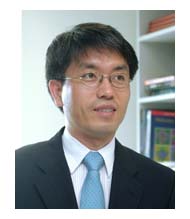 Prof. Chung Named Winner of 2008 KAIST Scientific Award
Professor Chung Jong-Kyeong of the Department of Biological Sciences was named the winner of the 2008 KAIST Scientific Award.
The prize was awarded by KAIST President Suh Nam-Pyo during the 37th KAIST anniversary ceremony on Feb. 16.
Chung was cited for disclosing the new anti-cancer aspect of adenosine monophosphate-activated protein kinase (AMPK). His papers, published in the science magazine Nature in 2006 and again in 2007, revealed that the protein could be used to treat certain forms of cancer, as well as prevent malignant growths.
2008.02.28 View 15679
Prof. Chung Named Winner of 2008 KAIST Scientific Award
Professor Chung Jong-Kyeong of the Department of Biological Sciences was named the winner of the 2008 KAIST Scientific Award.
The prize was awarded by KAIST President Suh Nam-Pyo during the 37th KAIST anniversary ceremony on Feb. 16.
Chung was cited for disclosing the new anti-cancer aspect of adenosine monophosphate-activated protein kinase (AMPK). His papers, published in the science magazine Nature in 2006 and again in 2007, revealed that the protein could be used to treat certain forms of cancer, as well as prevent malignant growths.
2008.02.28 View 15679 -
 KAIST Holds Symposium on Metabolic Engineering
The KAIST Institute for Bio-Century held a symposium on metabolic engineering at the auditorium of the KAIST"s Applied Engineering Bldg. on Thursday, Feb. 14, in cooperation with the BK21 Chemical Engineering Research Team.
The symposium focused on researches on bio-refinery program and bio-energy production in connection with steep hikes in oil prices and worsening environmental problems, including global warming.
Seven Korean experts presented their views on metabolic engineering strategies to effectively produce bio-energy and biofuel and the latest research trends.
Among the speakers, Prof. Lee Sang-yup, co-head of the KAIST Institute for Bio-Century, spoke on the theme of "Metabolic Engineering for Bio-refinery and Bio-energy.
The symposium provided an opportunity to take a glimpse into the latest research trends of metabolic engineering technology. Metabolic engineering technology is crucial to producing chemicals, energy and other substances from renewable biomass materials in a departure from heavy reliance on crude oil.
2008.02.14 View 17225
KAIST Holds Symposium on Metabolic Engineering
The KAIST Institute for Bio-Century held a symposium on metabolic engineering at the auditorium of the KAIST"s Applied Engineering Bldg. on Thursday, Feb. 14, in cooperation with the BK21 Chemical Engineering Research Team.
The symposium focused on researches on bio-refinery program and bio-energy production in connection with steep hikes in oil prices and worsening environmental problems, including global warming.
Seven Korean experts presented their views on metabolic engineering strategies to effectively produce bio-energy and biofuel and the latest research trends.
Among the speakers, Prof. Lee Sang-yup, co-head of the KAIST Institute for Bio-Century, spoke on the theme of "Metabolic Engineering for Bio-refinery and Bio-energy.
The symposium provided an opportunity to take a glimpse into the latest research trends of metabolic engineering technology. Metabolic engineering technology is crucial to producing chemicals, energy and other substances from renewable biomass materials in a departure from heavy reliance on crude oil.
2008.02.14 View 17225 -
 KAIST, Hynix Agree to Cooperate in Fostering Skilled Manpower
KAIST and Hynix Semiconductor, the world’s second largest producer of dynamic random access memory (DRAM) chips, have agreed to promote bilateral cooperation in fostering highly skilled manpower for the semiconductor industry. A signing ceremony was held on Jan. 21 in Seoul.
The agreement marked an expansion of the scope of cooperation between the two organizations into the system IC industry. Since 1995, KAIST and Hynix have cooperated in fostering human resource specialized in the memory semiconductor area, bringing up a total of 250 highly skilled personnel in the area so far. Under the new agreement, Hynix will provide financial support, including scholarships, to KAIST for the next five years. The number of students subject to the Hynix-financed program will be increased to 20 a year from the current 10. New material engineering and physics will be added to the areas covered by the cooperation program.
2008.01.29 View 13029
KAIST, Hynix Agree to Cooperate in Fostering Skilled Manpower
KAIST and Hynix Semiconductor, the world’s second largest producer of dynamic random access memory (DRAM) chips, have agreed to promote bilateral cooperation in fostering highly skilled manpower for the semiconductor industry. A signing ceremony was held on Jan. 21 in Seoul.
The agreement marked an expansion of the scope of cooperation between the two organizations into the system IC industry. Since 1995, KAIST and Hynix have cooperated in fostering human resource specialized in the memory semiconductor area, bringing up a total of 250 highly skilled personnel in the area so far. Under the new agreement, Hynix will provide financial support, including scholarships, to KAIST for the next five years. The number of students subject to the Hynix-financed program will be increased to 20 a year from the current 10. New material engineering and physics will be added to the areas covered by the cooperation program.
2008.01.29 View 13029 -
 KAIST, Nokia Launch Joint Research Project
Prof. Kyung Wook Baik of KAIST and his research team in the Department of Materials Science and Engineering announced the launch of a joint research project with Nokia, the world"s leading mobile phone supplier, on Jan. 24.
It is the first time that Nokia runs a joint research project with a Korean university or research institute.
Under the agreement, KAIST will develop a new ultrasonic welding process to bond various modules for mobile phones. The ultrasonic welding process, an indigenous technology patented by the research team led by Prof. Baik, is expected to contribute greatly to improving productivity in manufacturing mobile phones, as well as making it smaller and lighter.
The research period is six month and the project fund amounts to 35,000 euros.
2008.01.29 View 14427
KAIST, Nokia Launch Joint Research Project
Prof. Kyung Wook Baik of KAIST and his research team in the Department of Materials Science and Engineering announced the launch of a joint research project with Nokia, the world"s leading mobile phone supplier, on Jan. 24.
It is the first time that Nokia runs a joint research project with a Korean university or research institute.
Under the agreement, KAIST will develop a new ultrasonic welding process to bond various modules for mobile phones. The ultrasonic welding process, an indigenous technology patented by the research team led by Prof. Baik, is expected to contribute greatly to improving productivity in manufacturing mobile phones, as well as making it smaller and lighter.
The research period is six month and the project fund amounts to 35,000 euros.
2008.01.29 View 14427 -
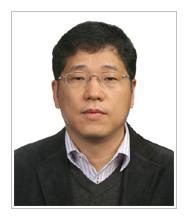 Professor Jie-Oh Lee of the Department of Chemistry of KAIST
Professor Jie-Oh Lee of the Department of Chemistry of KAIST was selected as the "KAIST Man of the Year."
Lee was cited for his successful identifying of the three-dimensional structure of protein that causes sepsis. His research is expected to contribute greatly to the development of medicines for immune system treatment.
The prize was given by KAIST President Suh Nam Pyo at the New Year"s ceremony on Jan. 2, 2008 at the KAIST auditorium.
Professor Lee published a series of research papers in Science, one of the world"s most prestigious scientific journals. Most recently, Lee was awarded the "Scientist of the Year" prize by the Korean Science Reporters Association.
2008.01.02 View 16733
Professor Jie-Oh Lee of the Department of Chemistry of KAIST
Professor Jie-Oh Lee of the Department of Chemistry of KAIST was selected as the "KAIST Man of the Year."
Lee was cited for his successful identifying of the three-dimensional structure of protein that causes sepsis. His research is expected to contribute greatly to the development of medicines for immune system treatment.
The prize was given by KAIST President Suh Nam Pyo at the New Year"s ceremony on Jan. 2, 2008 at the KAIST auditorium.
Professor Lee published a series of research papers in Science, one of the world"s most prestigious scientific journals. Most recently, Lee was awarded the "Scientist of the Year" prize by the Korean Science Reporters Association.
2008.01.02 View 16733 -
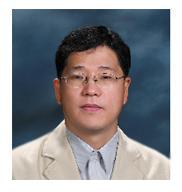 Professor Jie-Oh Lee awarded 'Scientist of the Year'
Professor Jie-Oh Lee of the Department of Chemistry was awarded the ‘Scientist of the Year’ prize for identifying the three-dimensional structure of protein that causes sepsis, and it was announced by the Korean Science Reporters Association (KOSRA) on November 26th.“Humans have about 30,000 different kinds of proteins, and they all have different structures, just like our faces,” said Professor Lee. “It is extremely helpful to know the three-dimensional shape of proteins when you are trying to understand what their functions in an organism are and trying to develop medicine for them.”
When looking for the three-dimensional structure, protein must first be crystallized and radiated with x-ray, so that reflected x-ray can be interpreted. The three-dimensional structure of sepsis immunity proteins TLR1-TLR2 and TLR4-MD2 could not be found until now because they would not even crystallize.
“I began to doubt if it was even possible to crystallize them because we went through so many failures,” reflected Professor Lee.
In August of last year, after about three years of research, the team finally came up with a new idea. The team decided to ‘stick’ the sepsis immunity protein to protein that easily crystallizes. If the combined structure of sepsis immunity protein and the known protein could be identified, the structure of sepsis immunity protein would be a combined structure subtracted by the known structure.
The three-dimensional structure was obtained with x-ray radiation from combined protein crystal. The combined protein was derived from an insect cell with altered DNA.
“This method seems very simple but no one ever tried it or no one ever succeeded in it,” said Professor Lee.
The result was a horseshoe shaped protein structure. The research team also expects the new protein-combining technology to contribute to the development of a new immune system treatment medicine.
The prize-awarding ceremony was held on November 26th in an event hosted by the Korean Hospital Association.
Also, Professor Ryong Ryoo of the Department of Chemistry was selected as the National Scientist last month.By KAIST Herald on November, 2007
2007.12.21 View 15919
Professor Jie-Oh Lee awarded 'Scientist of the Year'
Professor Jie-Oh Lee of the Department of Chemistry was awarded the ‘Scientist of the Year’ prize for identifying the three-dimensional structure of protein that causes sepsis, and it was announced by the Korean Science Reporters Association (KOSRA) on November 26th.“Humans have about 30,000 different kinds of proteins, and they all have different structures, just like our faces,” said Professor Lee. “It is extremely helpful to know the three-dimensional shape of proteins when you are trying to understand what their functions in an organism are and trying to develop medicine for them.”
When looking for the three-dimensional structure, protein must first be crystallized and radiated with x-ray, so that reflected x-ray can be interpreted. The three-dimensional structure of sepsis immunity proteins TLR1-TLR2 and TLR4-MD2 could not be found until now because they would not even crystallize.
“I began to doubt if it was even possible to crystallize them because we went through so many failures,” reflected Professor Lee.
In August of last year, after about three years of research, the team finally came up with a new idea. The team decided to ‘stick’ the sepsis immunity protein to protein that easily crystallizes. If the combined structure of sepsis immunity protein and the known protein could be identified, the structure of sepsis immunity protein would be a combined structure subtracted by the known structure.
The three-dimensional structure was obtained with x-ray radiation from combined protein crystal. The combined protein was derived from an insect cell with altered DNA.
“This method seems very simple but no one ever tried it or no one ever succeeded in it,” said Professor Lee.
The result was a horseshoe shaped protein structure. The research team also expects the new protein-combining technology to contribute to the development of a new immune system treatment medicine.
The prize-awarding ceremony was held on November 26th in an event hosted by the Korean Hospital Association.
Also, Professor Ryong Ryoo of the Department of Chemistry was selected as the National Scientist last month.By KAIST Herald on November, 2007
2007.12.21 View 15919 -
 Three Professors Selected as IEEE Fellows
Three Korea Advanced Institute of Science and Technology (KAIST)’s professors, Ju-Jang Lee, Yong-Hee Lee, and Hoi-Jun Yoo, were selected as a part of the 2008 Institute of Electrical and Electronics Engineers, Inc (IEEE)’s “Fellows.” A Fellow is the highest level of membership given only to those “with an extraordinary record of accomplishments” in their field of study. Although some IEEE memberships can be gained freely by all, the Fellow status is bestowed only by the IEEE Board of Directors.
Professor Ju-Jang Lee was awarded the Fellow status “for contributions to intelligent robust control and robotics.” Robust control is a system’s stable maintenance under many inputs in a dynamic environment. A part of KAIST’s Electrical Engineering Department, Professor Ju-Jang Lee has conducted successful research in these fields, and has published 538 papers. He also holds many patents in and outside of the country, and is the General Chair for two upcoming IEEE conferences in 2008 and 2009.
Professor Yong-Hee Lee of KAIST’s Physics Department was recognized for his “contributions to photonic devices based upon vertical cavity surface emitting lasers and photonic crystals.” Photonic devices are those that allow the practical use of photons, and photon crystals are structures that affect the motion of photons. Professor Yong-Hee Lee is an expert in the field of Photonics and his works have been cited over 2500 times. He is also an outstanding speaker, giving over 30 lectures in front of international audiences in the past 5 years, and receiving The Distinguished Lecturer’s Award from IEEE.
Professor Hoi-Jun Yoo was granted the prestigious Fellow status for his “contributions to low-power and high-speed VLSI design.” VLSI stands for ‘very large scale integration’ and refers to the skill for packing a huge number of semiconductors on an integrated circuit. Professor Lee’s Fellow status is noteworthy in that he studied, worked, and researched solely in Korea. He is also the youngest of the three KAIST professors to be granted membership in the class of 2008 Fellowship. IEEE also recognized Professor Yoo as the most frequent publisher during the past 8 years.
IEEE, originally concentrating on Electric Engineering, has now branched into many related fields. It is a nonprofit organization, and its aim is to be the world"s leading professional association for the advancement of technology. For its Fellow Class of 2008, 295 members were chosen; which is less that 0.1% of their total members.By KAIST Herald on December, 2007
2007.12.21 View 23281
Three Professors Selected as IEEE Fellows
Three Korea Advanced Institute of Science and Technology (KAIST)’s professors, Ju-Jang Lee, Yong-Hee Lee, and Hoi-Jun Yoo, were selected as a part of the 2008 Institute of Electrical and Electronics Engineers, Inc (IEEE)’s “Fellows.” A Fellow is the highest level of membership given only to those “with an extraordinary record of accomplishments” in their field of study. Although some IEEE memberships can be gained freely by all, the Fellow status is bestowed only by the IEEE Board of Directors.
Professor Ju-Jang Lee was awarded the Fellow status “for contributions to intelligent robust control and robotics.” Robust control is a system’s stable maintenance under many inputs in a dynamic environment. A part of KAIST’s Electrical Engineering Department, Professor Ju-Jang Lee has conducted successful research in these fields, and has published 538 papers. He also holds many patents in and outside of the country, and is the General Chair for two upcoming IEEE conferences in 2008 and 2009.
Professor Yong-Hee Lee of KAIST’s Physics Department was recognized for his “contributions to photonic devices based upon vertical cavity surface emitting lasers and photonic crystals.” Photonic devices are those that allow the practical use of photons, and photon crystals are structures that affect the motion of photons. Professor Yong-Hee Lee is an expert in the field of Photonics and his works have been cited over 2500 times. He is also an outstanding speaker, giving over 30 lectures in front of international audiences in the past 5 years, and receiving The Distinguished Lecturer’s Award from IEEE.
Professor Hoi-Jun Yoo was granted the prestigious Fellow status for his “contributions to low-power and high-speed VLSI design.” VLSI stands for ‘very large scale integration’ and refers to the skill for packing a huge number of semiconductors on an integrated circuit. Professor Lee’s Fellow status is noteworthy in that he studied, worked, and researched solely in Korea. He is also the youngest of the three KAIST professors to be granted membership in the class of 2008 Fellowship. IEEE also recognized Professor Yoo as the most frequent publisher during the past 8 years.
IEEE, originally concentrating on Electric Engineering, has now branched into many related fields. It is a nonprofit organization, and its aim is to be the world"s leading professional association for the advancement of technology. For its Fellow Class of 2008, 295 members were chosen; which is less that 0.1% of their total members.By KAIST Herald on December, 2007
2007.12.21 View 23281 -
 Students Meet with KAIST Development Foundation
A group of department representatives and distinguished school staff gathered on November 21st to discuss the future funding of Korea Advanced Institute of Science and Technology (KAIST). Participants of the meeting included the Vice President, Dean of Academic Affairs, Director of Welfare, the President of Undergraduate Student Association, and many more. The Vice President explained that students and alumnae are the owners of KAIST and should take pride in the successful development of KAIST. He also added that they should share the same goal of supporting KAIST to become the world"s leading institute of science and technology.
Statistics show a noticeable correlation between a university"s status in world rankings and the percentage of its alumni donation participants. In the case of top U.S. universities, a large number of their alumnae donate astronomical sums of money in hopes to contribute to the school"s development. For example, in 2006, a whopping 61% of the Princeton University alumni participated in school donations, while - in stark contrast - a meager 1.1% of 31,000 KAIST alumnae made monetary contributions. Perhaps this low level of donation participation explains why KAIST is making little progress in its efforts to advance into a globally-recognized university.
"Before we die, many of us look back and regret "I should"ve earned a little more"," said the Vice President. "But what we should really reflect on is how I could"ve given a little more." Throughout the meeting, he reiterated the significance of enrolled students practicing donation, no matter how insignificant the amount, when they are still young.
KAIST is currently receiving support from its alumni, parents, students, corporations, foundations, professors and staff. With a growing demand for increasing the number of professors, research fees and labor budget, however, KAIST requires the full support and dedication of students and alumnae alike if it is to fulfill its vision of becoming the academic leader in science and technology- it is essential for students to get accustomed to the habit of donating to the school. To promote this practice of contributing, the Vice President urged students to look for opportunities to make donations.By KAIST Herald on December, 2007
2007.12.21 View 15397
Students Meet with KAIST Development Foundation
A group of department representatives and distinguished school staff gathered on November 21st to discuss the future funding of Korea Advanced Institute of Science and Technology (KAIST). Participants of the meeting included the Vice President, Dean of Academic Affairs, Director of Welfare, the President of Undergraduate Student Association, and many more. The Vice President explained that students and alumnae are the owners of KAIST and should take pride in the successful development of KAIST. He also added that they should share the same goal of supporting KAIST to become the world"s leading institute of science and technology.
Statistics show a noticeable correlation between a university"s status in world rankings and the percentage of its alumni donation participants. In the case of top U.S. universities, a large number of their alumnae donate astronomical sums of money in hopes to contribute to the school"s development. For example, in 2006, a whopping 61% of the Princeton University alumni participated in school donations, while - in stark contrast - a meager 1.1% of 31,000 KAIST alumnae made monetary contributions. Perhaps this low level of donation participation explains why KAIST is making little progress in its efforts to advance into a globally-recognized university.
"Before we die, many of us look back and regret "I should"ve earned a little more"," said the Vice President. "But what we should really reflect on is how I could"ve given a little more." Throughout the meeting, he reiterated the significance of enrolled students practicing donation, no matter how insignificant the amount, when they are still young.
KAIST is currently receiving support from its alumni, parents, students, corporations, foundations, professors and staff. With a growing demand for increasing the number of professors, research fees and labor budget, however, KAIST requires the full support and dedication of students and alumnae alike if it is to fulfill its vision of becoming the academic leader in science and technology- it is essential for students to get accustomed to the habit of donating to the school. To promote this practice of contributing, the Vice President urged students to look for opportunities to make donations.By KAIST Herald on December, 2007
2007.12.21 View 15397